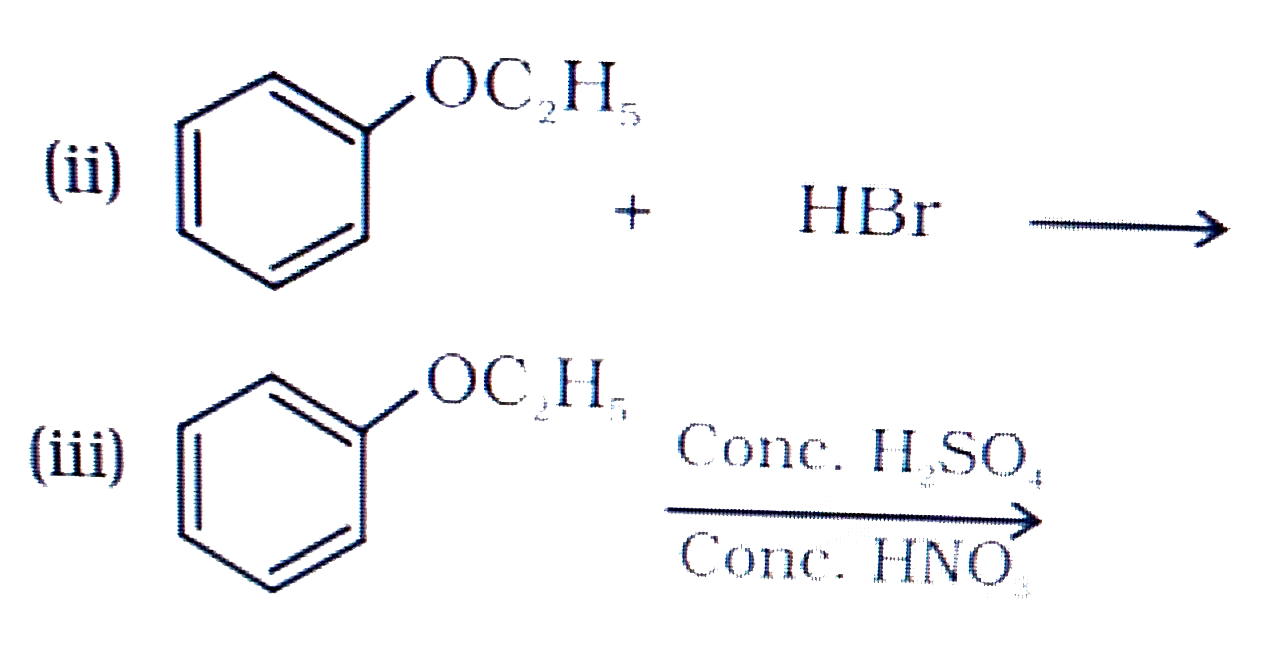Predict the formulae of the products of the following reactions:
CH3COCH3+HCN→
To predict the formulae of the products of the reaction between acetone (CH₃COCH₃) and hydrogen cyanide (HCN), we can follow these steps:
Step 1: Identify the Reactants
The reactants are:
- Acetone: CH₃COCH₃
- Hydrogen cyanide: HCN
Step 2: Understand the Mechanism of Reaction
In this reaction, acetone undergoes a nucleophilic addition reaction with HCN. The carbonyl carbon (C=O) in acetone is electrophilic and can be attacked by the nucleophile (CN⁻) from HCN.
Step 3: Nucleophilic Attack
The nucleophile (CN⁻) attacks the electrophilic carbon atom of the carbonyl group in acetone. This results in the formation of a tetrahedral intermediate:
- The structure of the intermediate can be represented as: CH₃C(OH)(CN)CH₃.
Step 4: Protonation
The intermediate will then react with another molecule of HCN. The hydroxyl group (OH) will be protonated by H⁺ from HCN, and the CN⁻ will leave, leading to the formation of the final product, which is a cyanohydrin.
Step 5: Write the Product
The final product can be represented as:
- CH₃C(OH)(CN)CH₃, which can also be written as: CH₃C(OH)C≡NCH₃.
Step 6: Determine the Molecular Formula
Now, we can determine the molecular formula of the product:
- Count the number of carbon (C), hydrogen (H), nitrogen (N), and oxygen (O) atoms:
- Carbons (C): 4
- Hydrogens (H): 7
- Nitrogens (N): 1
- Oxygens (O): 1
Thus, the molecular formula of the product is C₄H₇NO.
Final Answer
The formula of the product formed when acetone reacts with hydrogen cyanide is C₄H₇NO.
---
The reactants are:
- Acetone: CH₃COCH₃
- Hydrogen cyanide: HCN
In this reaction, acetone undergoes a nucleophilic addition reaction with HCN. The carbonyl carbon (C=O) in acetone is electrophilic and can be attacked by the nucleophile (CN⁻) from HCN.
The nucleophile (CN⁻) attacks the electrophilic carbon atom of the carbonyl group in acetone. This results in the formation of a tetrahedral intermediate:
- The structure of the intermediate can be represented as: CH₃C(OH)(CN)CH₃.
The intermediate will then react with another molecule of HCN. The hydroxyl group (OH) will be protonated by H⁺ from HCN, and the CN⁻ will leave, leading to the formation of the final product, which is a cyanohydrin.
The final product can be represented as:
- CH₃C(OH)(CN)CH₃, which can also be written as: CH₃C(OH)C≡NCH₃.
Now, we can determine the molecular formula of the product:
- Count the number of carbon (C), hydrogen (H), nitrogen (N), and oxygen (O) atoms:
- Carbons (C): 4
- Hydrogens (H): 7
- Nitrogens (N): 1
- Oxygens (O): 1
The formula of the product formed when acetone reacts with hydrogen cyanide is C₄H₇NO.
Topper's Solved these Questions
- ALDEHYDES, KETONES AND CARBOXYLIC ACIDSBook:ICSEChapter:ALDEHYDES, KETONES AND CARBOXYLIC ACIDSExercise:ISC EXAMINATION QUESTIONS (PART-I OBJECTIVE QUESTIONS) (FILL IN THE BLANKS)
Explore 27 Videos
- ALDEHYDES, KETONES AND CARBOXYLIC ACIDSBook:ICSEChapter:ALDEHYDES, KETONES AND CARBOXYLIC ACIDSExercise:ISC EXAMINATION QUESTIONS (PART-I OBJECTIVE QUESTIONS) (MULTIPLE CHOICE QUESTION)
Explore 24 Videos
- ALDEHYDES, KETONES AND CARBOXYLIC ACIDSBook:ICSEChapter:ALDEHYDES, KETONES AND CARBOXYLIC ACIDSExercise:EXERCISE (PART-II DESCRIPTIVE QUESTIONS) (VERY SHORT QUESTIONS)
Explore 282 Videos
- ALCOHOLS, PHENOLS AND ETHERS Book:ICSEChapter:ALCOHOLS, PHENOLS AND ETHERS Exercise:ISC EXAMINATION QUESTIONS
Explore 25 Videos
- APPENDIX II ( TYPICAL CONVERSIONS)Book:ICSEChapter:APPENDIX II ( TYPICAL CONVERSIONS)Exercise:AROMATIC CONVERSIONS
Explore 98 Videos
Similar Questions
Predict the formulae of the products of the following reactions:
C6H5COCH3+NH2OH→
View SolutionPredict the formulae of the products of the following reactions:
C6H5COCH3+NH2OH→
View SolutionPredict the formulae of the products of the following reactions:
CH3CH2CHO+Cl2→
View SolutionPredict the products of the following reactions:
(i) CH3−CH2−CH2−O−CH3+HBr→

(iv) (CH3)3C−OC2H5HI−−→
View SolutionPredict the products of the following reactions :
(i) CH3−CH2−CH2−O−CH3+HBr→
(ii)
(iii)
(iv) (CH3)3C−OC2H5+HI→
View SolutionPredict the major product in the following reaction :
C6H5−CH2CO2CH3(i)CH3MgBr(Excess)−−−−−−−−−−−−−−→(ii)H⊕.
View SolutionWrite the products of the following reactions:
CH3COCH3Zn−Hg−−−−−→conc. HCI
View SolutionWrite the products of the following reactions:
CH3COCH3(a)Mg−Hg,dry ether−−−−−−−−−−−−−→(b)dil.acid?
View SolutionWhat is the major product obtained from the following reactions ?
CH3COCH2COOHheat−−→ product
View SolutionPredict the product of the folllowing reaction :
CH3−C∣CH3=OH2N.NHCONH2−−−−−−−−−−→?
View Solution